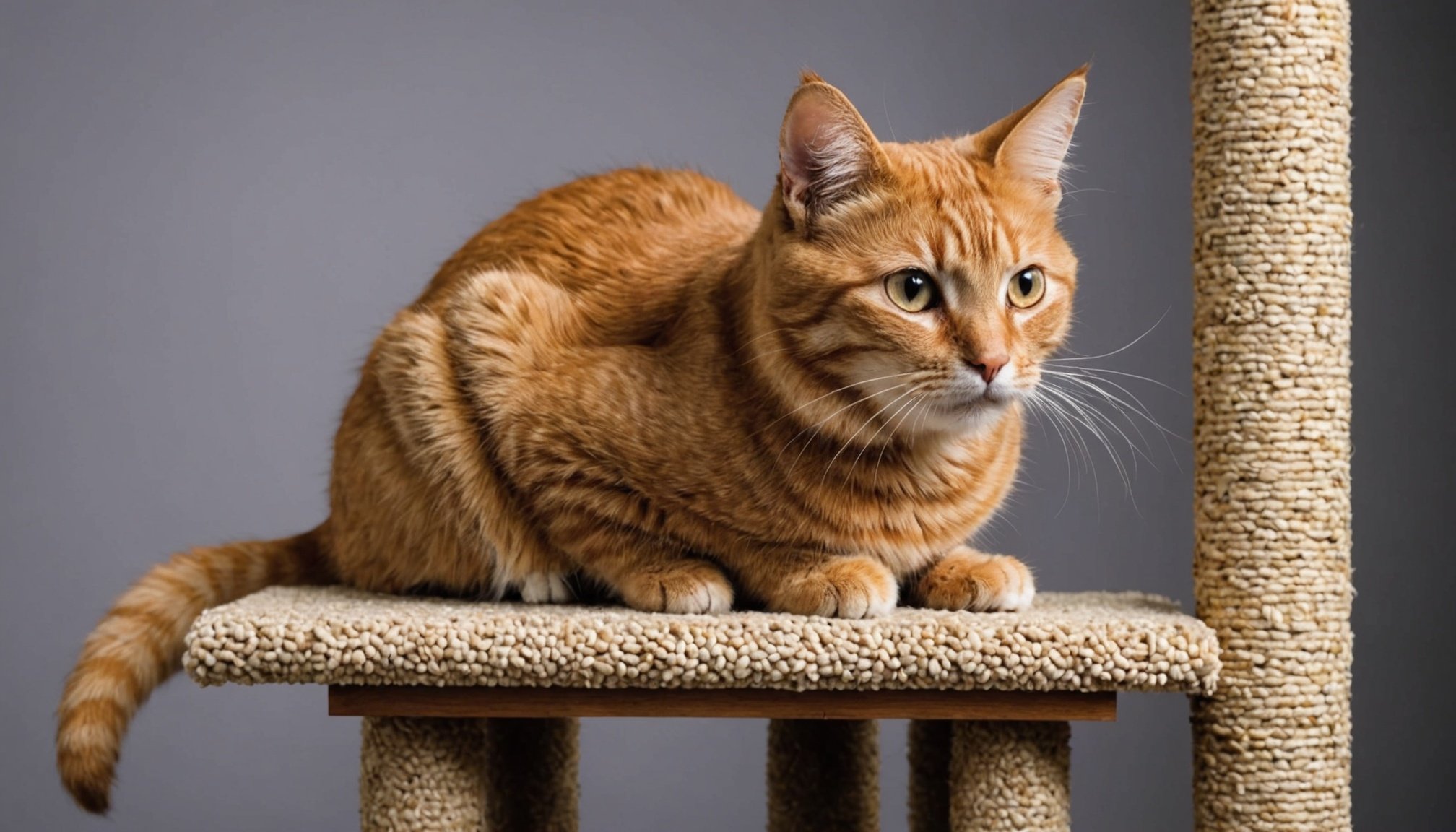The Ultimate Guide to Cat Training: Proven Strategies to Inspire Your Feline Friend to Love the Scratching Post
Understanding Your Cat’s Scratching Behavior
Before we dive into the nitty-gritty of training your cat to use a scratching post, it’s crucial to understand why cats scratch in the first place. Scratching is a natural and essential behavior for cats, serving several purposes:
- Marking Territory: Cats have scent glands between their toes, and when they scratch, they leave these scent marks on surfaces. This helps them claim their territory and feel secure[2][4].
- Maintaining Nails: Scratching helps cats wear down their claws, which is vital for their comfort and mobility.
- Stretching and Exercise: Scratching allows cats to stretch their muscles, particularly in their back, legs, and paws.
- Relief and Stress: Cats may scratch to relieve stress or discomfort, especially if they are adjusting to a new environment or experiencing changes in their home[2].
Choosing the Right Scratching Post
Selecting the right scratching post is the first step in encouraging your cat to use it. Here are some key considerations:
Have you seen this : The complete handbook for effectively socializing your puppy with other pets: pro strategies and proven techniques
Vertical vs. Horizontal Scratching Posts
Cats have individual preferences when it comes to the orientation of their scratching posts. Some cats prefer vertical posts, which allow them to stretch and scratch in an upright position, while others enjoy horizontal surfaces. Observing your cat’s scratching habits can help you determine the best option for them[1].
Material Preferences
Cats have different material preferences for scratching. Some cats love sisal ropes, while others prefer cardboard or carpeted surfaces. Providing a variety of materials can cater to different preferences and ensure your cat finds something they like[1].
In the same genre : Mastering Border Collie Training: Proven Strategies to Stop Gentle Nipping – An Ultimate Guide
Height and Surface Type
The height of the scratching post is also important. A taller post allows for full-body stretching, which is ideal for adult cats. For kittens or elderly cats, shorter posts may be more suitable. Additionally, some cats prefer inclined surfaces, so offering a mix of flat and inclined options can be beneficial[1].
Material Quality and Durability
A sturdy base is essential to prevent the scratching post from tipping over during vigorous scratching sessions. High-quality, durable materials are also crucial to ensure the post withstands regular use. Cats can be rough on their toys, so investing in a durable scratching post is a wise decision[1].
Safety Considerations
Ensure that the materials used are non-toxic to safeguard your cat’s health. Cats may ingest small particles while scratching, so choosing safe materials is essential[1].
Training Your Cat to Use the Scratching Post
Training your cat to use a scratching post requires patience, consistency, and positive reinforcement. Here are some effective tips:
Choose the Right Scratching Post
As mentioned earlier, cats have preferences when it comes to scratching posts. Experiment with different types to see which one your cat likes the most. Place the post in a prominent location where your cat often hangs out, such as near their favorite resting spot[1].
Make it Appealing
Sprinkle some catnip on the scratching post or use a toy to lure your cat towards it. Making the post appealing will increase the chances of your cat using it. Here are some additional tips to make the post more attractive:
- Use Catnip: Catnip is a natural attractant for many cats. Sprinkle it on the scratching post to make it more appealing.
- Add Interactive Elements: Introduce variety to your cat’s scratching post by adding interactive elements like hanging toys. This will keep your cat engaged and prevent boredom[1].
- Provide Different Textures: Offer different textures such as sisal, carpet, or cardboard to cater to your cat’s preferences.
Redirecting Unwanted Scratching Behavior
If your cat is scratching furniture, it’s important to redirect this behavior without punishing them.
- Do Not Punish Your Cat: Avoid scolding or punishing your cat for scratching furniture. This can create fear and anxiety, making the problem worse[1].
- Use Deterrents: Use double-sided tape or a citrus-based spray as a deterrent. Cats dislike sticky textures and strong scents. Here are some additional deterrents you can use:
- Double-Sided Tape: Place double-sided tape on the surfaces you want to protect. Cats find the sticky texture unpleasant.
- Citrus-Based Sprays: Spray a citrus-based solution on the surfaces. Cats dislike the strong scent of citrus.
- FELIWAY® Optimum Diffuser: If your cat is scratching due to stress or discomfort, a FELIWAY® Optimum diffuser can help reduce this behavior by sending messages of serenity and reassurance[2].
Using Positive Reinforcement
Positive reinforcement is a powerful tool in cat training.
- Reward Good Behavior: Whenever you see your cat using the scratching post, praise and reward them with treats or extra playtime. Positive reinforcement will strengthen the desired behavior[1].
- Be Patient and Consistent: Training takes time, so be patient with your cat. Consistency is key to successful training. Here are some tips to maintain consistency:
- Set a Routine: Establish a regular routine for rewarding your cat when they use the scratching post.
- Use Consistent Rewards: Use the same treats or rewards each time to reinforce the behavior.
Providing Adequate Scratching Surfaces
Apart from the main scratching post, it’s important to offer additional scratching surfaces throughout your home.
Multiple Scratching Posts
Place cardboard scratchers, scratching pads, or vertical scratching posts in various rooms to provide your cat with options and promote healthy scratching habits.
Strategic Placement
Place scratching posts near areas where your cat spends most of their time, such as near their litter box or favorite sleeping spots. Here are some strategic locations to consider:
- Near Sleeping Areas: Cats often scratch after waking up from a nap, so placing the post near their favorite resting spot can be effective.
- Near High-Traffic Areas: Placing scratching posts in high-traffic areas can encourage your cat to use them more frequently.
Monitoring Your Cat’s Behavior
Regularly observing your cat’s interaction with the scratching post can help you identify any changes in behavior or preferences.
Adjusting the Scratching Post
Adjust the scratching post’s location, height, or additional features based on your cat’s feedback to optimize their scratching experience and encourage consistent use. Here are some tips for monitoring and adjusting:
- Observe Preferences: Watch your cat to see which materials and orientations they prefer.
- Adjust Height: If your cat seems to prefer a different height, adjust the post accordingly.
- Add Variety: Introduce new textures or angles to keep the scratching post interesting and engaging.
Practical Tips and Examples
Here are some practical tips and examples to help you in your cat training journey:
Example: Introducing a New Scratching Post
When introducing a new scratching post, start by placing it near your cat’s favorite scratching spot. Sprinkle some catnip on the post to make it appealing. If your cat is not immediately interested, try moving the post to different locations until you find one that works.
Example: Using Positive Reinforcement
For example, if you notice your cat using the scratching post, immediately reward them with a treat and praise. Consistency is key, so make sure to reward your cat every time they use the post correctly.
Table: Comparing Different Scratching Post Materials
Here is a table comparing different materials commonly used in scratching posts:
| Material | Pros | Cons |
|---|---|---|
| Sisal Rope | Durable, cats love the texture, easy to replace | Can be expensive, may shed fibers |
| Carpet | Soft and comfortable, easy to clean | May not be as durable, can fray over time |
| Cardboard | Inexpensive, eco-friendly, cats often prefer the texture | Not durable, needs frequent replacement |
| Microfiber | Soft and sleek, less likely to be scratched | Not suitable for cats who need to wear down their claws |
| Denim/Canvas | Tight weave makes it harder for cats to scratch, durable | Can still be scratched, may show signs of wear over time |
Testimonials and Success Stories
Here are some testimonials from cat owners who have successfully trained their cats to use scratching posts:
- “I was amazed at how quickly my cat took to the new scratching post. I just placed it near her favorite sleeping spot and sprinkled some catnip on it. Now she uses it every day!” – Sarah, cat owner
- “I was struggling to keep my cat from scratching the furniture, but after introducing a FELIWAY® Optimum diffuser and providing multiple scratching posts, the problem has almost disappeared.” – John, cat owner
Training your cat to use a scratching post is a rewarding process that benefits both your cat and your home. By understanding your cat’s scratching behavior, choosing the right scratching post, and using positive reinforcement, you can encourage your cat to develop healthy scratching habits. Remember to be patient, consistent, and observant, and don’t hesitate to adjust your strategies based on your cat’s unique preferences and needs.
With the right approach, you can help your feline friend love the scratching post, protecting your furniture and ensuring a happier, healthier home for both you and your pet.

